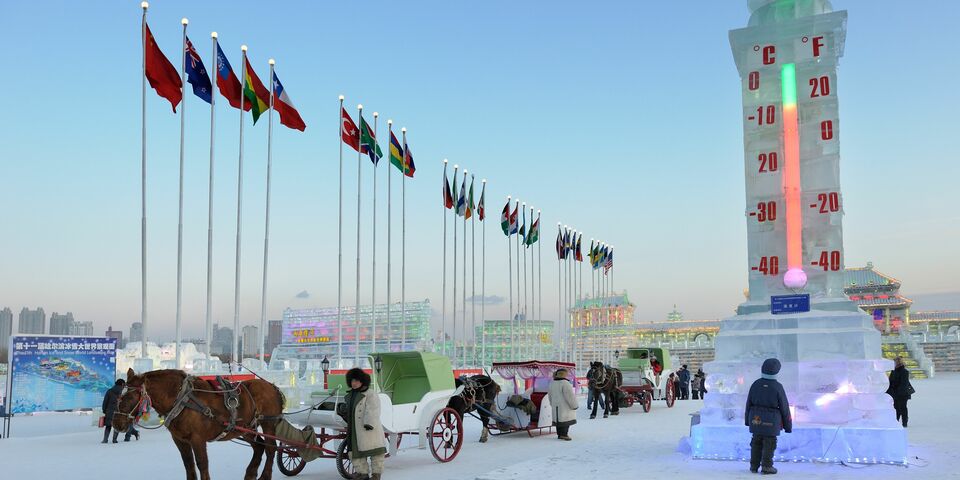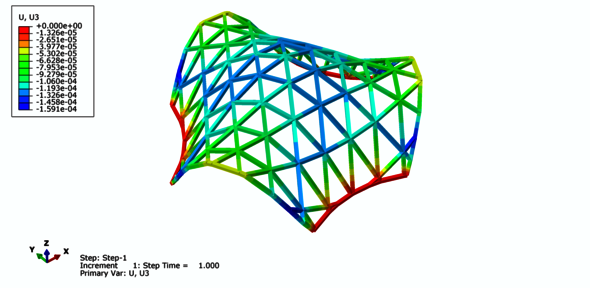Gridshell made of ice intended to impress the Chinese
A 3D-printed igloo won't be coming to the city of Harbin in northern China before this year is out. Six months ago Arno Pronk, assistant professor at TU/e's Department of the Built Environment, still had hopes that it would, but the transport of the necessary equipment is too arduous. Instead he's going to build a gridshell of ice at the university campus in Harbin. And he'll be doing it using the kind of piping bags that usually dispense cream.
Before the summer vacation Pronk was still highly positive about his new project, which was due to be implemented in Harbin six months later. He was supposed to print an igloo instead of building one by spraying iced water against an inflatable mould, which until now has been the standard technique. He spoke of having developed a jelly that not only binds the mixture of materials it contains, but also works like a lubricant. This would prevent the piping nozzle of the 3D printer becoming blocked. A patent application has been filed.
But according to Pronk, getting the necessary equipment to Harbin this year would be too arduous. It has therefore been decided to build a gridshell on the campus of the Harbin Institute of Technology. This is an open structure and one which, according to Pronk, has an esthetic rather than a functional value, “but will do a good job of showing the possibilities offered by 3D ice printing.”
To make the structure a mould is first inflated, over which ropes will be pulled tight. This forms the basis for the grid ultimately made of ice. With piping bags normally intended for cream, the special ice jelly developed in Eindhoven is, as it were, ‘printed’ onto this network of ropes. To enable the ice printers to reach everywhere without damaging the structure, a special scaffold must first be erected. Once the ice jelly has frozen onto the ropes, the mould is removed and the open structure remains.
Almost art
In the past Pronk has always been keen to emphasize the functional value of his structures, such as the temporary creation of storage space in cold regions, or even the possibility of building homes on Mars. But that doesn't enter into this project, he admits. “This gridshell is almost art, it clearly has an esthetic aspect. We hope it will amaze the Chinese.”
This year Pronk, who leaves for Harbin tomorrow, has also been chosen as a jury member for the city's famous ice festival. He will be heading east on three occasions this winter. At the tail end of 2017, working in cooperation with the Harbin Institute of Technology, he built the Flamenco Ice Tower.
Pronk has substantially revised his original plans to create a Holland House made of ice in 2022 in Beijing during the Winter Olympics. “The conditions in Beijing are not suitable: it won't be cold enough. It would be a huge kick, I think, if every day in the Holland House when we celebrate the medal winners we can present 3D printed busts of these individuals.”



Discussion